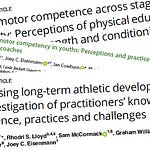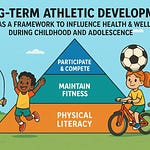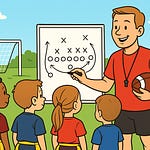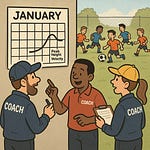This Audio Overview summarizes our paper -Growth, Maturation and Youth Sports: Issues and Practical Solutions -published in 2020 in a special issue of Annals of Human Biology.
The conversation highlights that while organized youth sports offer significant developmental benefits, variations in growth and maturation can create advantages or disadvantages in performance, team selection, and progression. It also discusses how stakeholders like coaches and administrators play a crucial role in addressing these biases and proposes solutions such as consistent assessment of growth and maturity and implementing strategies like bio-banding, which groups athletes based on biological age rather than chronological age, to promote a more equitable and positive experience in youth sports. It also emphasizes the need for greater knowledge translation and practical implementation of these concepts within the youth sports system.
Key Themes
Growth and Maturation as Key Influences on Youth Sports Participation and Performance: The timing and tempo of biological maturation significantly impact physical qualities, technical ability, and psychological constructs, directly affecting opportunities to participate, be selected, and be identified for talent development.
Challenges Associated with Maturation: The natural variations in growth and maturation within youth age groups create both potential advantages and disadvantages for young athletes, leading to biases in selection and impacting development.
Distinction Between Relative Age and Biological Maturation: It is crucial to understand that these are two separate concepts, although they can interact to influence a young athlete's experience. Relative age refers to birthdate within an age group, while biological maturity relates biological age to chronological age.
Need for Stakeholder Education and Informed Decision-Making: Policy makers, administrators, coaches, parents, and children need to understand growth and maturation to ensure positive experiences and equitable opportunities in youth sports.
Lack of Translation and Implementation of Research: Despite ample research, the practical application of knowledge about growth and maturation within youth sport programs is often limited.
Practical Solutions and Strategies: The paper proposes several approaches to address the challenges, including education, consistent monitoring of growth and maturity, and adapting training and competition structures.
Bio-banding as a Potential Solution: Matching athletes based on size or maturity status rather than chronological age is presented as a strategy to mitigate the effects of maturational differences in training and competition.
📰 Get access to the complete paper here and peruse related content in the Growth & Maturation tab and Youth Athletic Development tab. And, consider subscribing and supporting.













